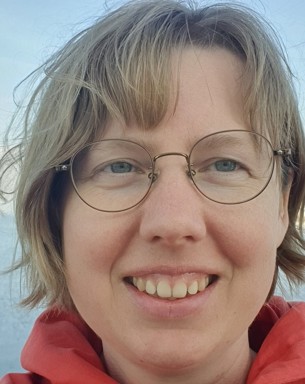
Lisa Petersson
Presentation
During my postdoc I was associated with Utsunomiya University in Japan. I studied the effects of sika deer browsing on forest understory vegetation and epiphyte communities in Nikko National Park.
In my PhD project, I studied ecosystem services and biodiversity, focusing on vascular plants, bryophytes, and lichens in managed stands of Scots pine and Norway spruce.
2021 - 2023 Postdoctoral researcher. Southern Swedish Forest Research Centre, Alnarp Sweden and Forest department of Utsunomiya University, Utsunomiya, Japan.
2020 - 2021 Research assistant Southern Swedish Forest Research Centre, Alnarp Sweden.
SLU crop platform project ESSLA: Ecosystem Services in Sweden – At the Landscape Level
2015 - 2020 PhD-student at Southern Swedish Forest Research Centre, Alnarp Sweden
2015 MSc Environmental Science. Lund university
2013 BSc Landscape Science. Kristianstad university
Research
I'm currently involved in following main research projects:
The return of wetland forests – exploring soil moisture's role in biodiversity and carbon storage. The project is funded by Formas and will run from 2025 to 2029.
Forest management effect on ant communities – Emil Andersson's PhD project.
Landscape changes & vascular plants – How recent changes in landuse affects threatened species of vascular plants. The project is funded by WWF.
Life's a beech – Restoring beech forests in southern Sweden. A EU financed Life project, where I help coordinate the parts where SLU is involved.
Environment analysis
Since 2025, I am a member of FOMAN-S – the Continuous Environmental Monitoring program at the Faculty of Forest Sciences, SLU.
Teaching
I am teaching biodiversity and nature conservation at the bachelor program Forest and Landscape and Euroforester master program. Since 2023 I am leading the course Forest and Landscape Ecology.
Supervision
I am the supervisor for PhD candidate Emil Andersson, studying how forest ants are affected by different forest management practices.
I've been supervising following student theses:
Inés Díaz García 2024. Can the disappearance of the forest orchid Goodyera repens be linked to clearcutting?
Glenn Faxhag Raymond 2022. Skador på kultur- och fornlämningar i samband med föryngringsavverkning - med fokus på oregistrerade lämningar
Ewa Jastrzebska 2020. Poplar for biodiversity?
Johan Back och Christian Syk 2018 Fältskiktsväxter i gran- och tallbestånd i södra Småland : en studie om indikatorvärden och hävdgynnade växter
Selected publications
Petersson, L., Salk, C., Jensen, D., Thor, G. and Ohkubo, T. (2025), Long-Term Deer Exclusion Releases Dwarf Bamboo, Reducing Vascular Plant Diversity. Applied Vegetation Science, 28: e70018.
Torres-García, M. T., Hedwall, P.-O., Larrieu, L., Öckinger, E., Johansen, H., Niklasson, M., Petersson, L., Svensson, E., Uría-Díez, J., & Felton, A. (2024). Tree and stand characteristics jointly predict tree-related microhabitats on retention trees in production forests. Biological Conservation, 299, 110821.
Lariviere, D., Holmström, E., Petersson, L., Djupström, L. & Weslien, J. 2023. Ten years after: Release cutting around old oaks still affects oak vitality and saproxylic beetles in a Norway spruce stand. Agricultural and Forest Entomology, 1– 11.
Petersson, L., Lariviere, D., Holmström, E., Fritz, Ö, & Felton, A. 2022. Conifer tree species and age as drivers of epiphytic lichen communities in northern European production forests. The Lichenologist, 54(3-4), 213-225.
Ara, M., Felton, A. M. Holmström, E. Petersson, L., Berglund, M. Johansson, U. Nilssona, U. 2022. Pre-commercial thinning in Norway spruce-birch mixed stands can provide abundant forage for ungulates without losing volume production. Forest Ecology and Management 520 120364.
Felton, A., Felton, A. M., Wam, H. K., J. Witzell, Wallgren, M., Löf, M., Sonesson, J., Lindbladh, M., Björkman, C., Blennow, K., Cleary, M., Jonsell, M. Klapwijke, M., Niklassona, M., Petersson, L., Rönnberg, J., Ode Sang, Å., Wrethling, F. and Hedwall, P-O. 2022. Forest biodiversity and ecosystem services from spruce-birch mixtures: The potential importance of tree spatial arrangement. Environmental Challenges 2022 Vol. 6 Pages 100407
Petersson, L., Nilsson, S., Holmström, E., Lindbladh, M. & Felton, A. 2021. Forest floor bryophyte and lichen diversity in Scots pine and Norway spruce production forests. Forest Ecology and Management 493.
Lindbladh, M., Hedwall, P.-O., Holmström, E., Petersson, L. and Felton, A. 2020. How generalist are these forest specialists? What Sweden’s avian indicators indicate. Anim Conserv, 23: 762-773.
Petersson, L. 2019. Replacing Scots pine with Norway spruce. Implications for biodiversity in production forests. Sveriges lantbruksuniversitet, Acta Universitatis Agriculturae Sueciae, 1652-6880; 2019:85 [Doktorsavhandling]
Petersson, L., Holmström, E., Lindbladh, M., and Felton, A. 2019. Tree species impact on understory vegetation: Vascular plant communities of Scots pine and Norway spruce managed stands in northern Europe. Forest Ecology and Management 448 p. 330-345.
Lindbladh, M., Petersson, L., Hedwall, P.-O., Trubins, R., Holmström E. and Felton, A. 2019. Consequences for bird diversity from a decrease in a foundation species—replacing Scots pine stands with Norway spruce in southern Sweden. Regional Environmental Change 19 p. 1429-1440.
Felton, A., Petersson L., Nilsson, O. Witzell, J. Cleary, M., Felton, A. M., Björkman, C., Sang, Å. O. Jonsell, M., Holmström, E., Nilsson, U., Rönnberg, J., Kalén, C. and Lindbladh, M. 2019. The tree species matters: Biodiversity and ecosystem service implications of replacing Scots pine production stands with Norway spruce. Ambio.
Petersson, L. and Andersson, S. 2015. Vegetationsförändringar på Lilla Smörstack 1982-2015 (populärvetenskaplig artikel). Botaniska notiser 148(3) p. 15-22